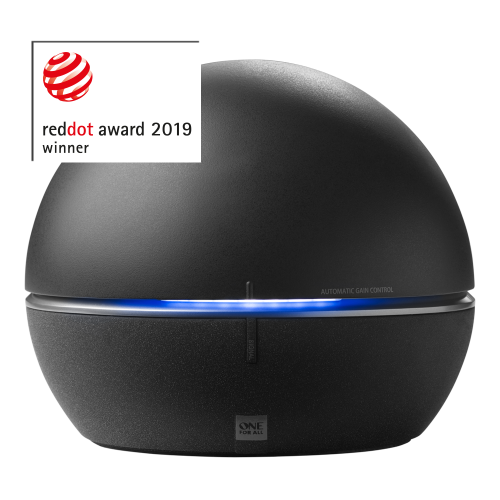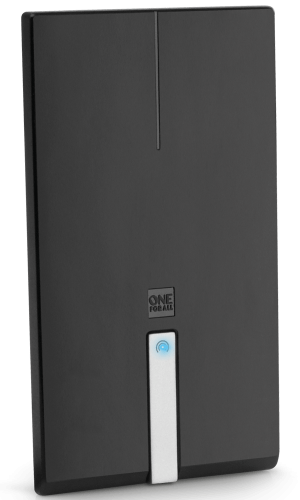How to improve the reception quality of your aerial?
Nothing more frustrating than having a poor TV reception. Get rid of annoying signal problems and start experiencing the great benefits of a TV aerial. We assists you with tips and tricks that will help you out getting an optimal reception with your TV aerial.
1. Distance to TV transmitter
Know the distance between your home and the TV transmitters broadcasting in your area. Check the One For All aerial selector to find the nearest TV transmitter.
2. Position of the aerial
Reception not only depends on distance from a broadcast tower, but also on the terrain and the surroundings (nearby houses, buildings, trees, etc.). Therefore, the height of your aerial is a critical factor. When placing indoor, try installing it in the attic near a window. Keep in mind that objects in a room can interfere the signal, so try different locations to find out the most optimal place. Pick a spot where the aerial will be secure and where you get the best coverage. Like analog aerials, a digital aerial works better the higher you can place it and the closer to a window. Move your TV aerial to the highest point possible and close to a window, and you will probably see drastic improvement!
3. Direction to TV transmitter
Check the aerial of the neighbors to get the right direction towards the nearest TV transmitter.
4. Polarization TV network
TV transmitters broadcast the TV signal using vertical or horizontal polarization. In most of the countries the TV signal is broadcasted in horizontal polarization (check your terrestrial TV operator's website to get the latest information). The aerial needs to be placed in the same position as the TV transmitter. Because most of the TV transmitter are horizontal polarized it would be best to start putting the aerial in a horizontal position. One For All aerials receive vertical as well as horizontal signals.
5. Keep your TV aerial away from metal
Keep in mind that metallic surfaces near your aerial can cause interference with the digital signals and can even block your reception. For example, when placing your aerial in a window, even metal burglar bars in your window can cause issues (metal blocks both TV and Radio signals). Try to keep as much distance as practical from metal objects (6 feet or greater is ideal).
6. Strong signals areas
If the signal strength in your area is really strong and you are using an antenna with built-in amplifier it might be possible that the TV receiver gets too much signal. This might reflect in loss of TV signal. The amplification of the antenna can be reduced by turning the variable gain control from max to min. Put it on min and scan for TV channels again.
7. Telescopic aerials
If you are using an aerial with telescopic aerial make sure that the aerials are extended to the maximum length to get the best performance. When using an aerial with two telescopic aerials the best way to start with is positioning them at an angle of 90° away from each other.
8. Longer cable
Extending the aerial cable will slightly reduce the signal level that gets to your TV, but if the longer length allows you to reach the window that is facing the TV transmitter it might improve your TV signal. Try not to use an unnecessarily long cable though, as that will reduce your signal level.
9. Cables other devices
Keep all other wires and cables as far away from the aerial as possible. The close proximity of other cables can interfere with the reception.
10. Amplified aerial
Adding a signal booster to your aerial, or using an amplified aerial can give you better results than a passive aerial.
Hopefully, these tips will help set you on the path to getting the best reception possible from your TV aerial.
Videos
Contact Customer Support
If you cannot find the answer to your question, please contact our Customer Support Team.
We strive to respond within 5 working days.


